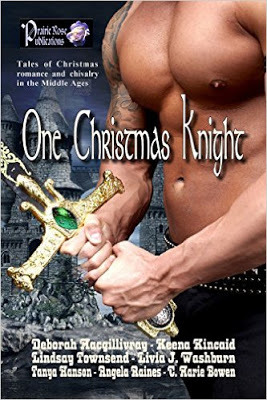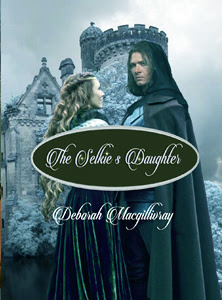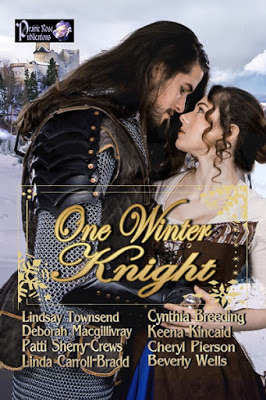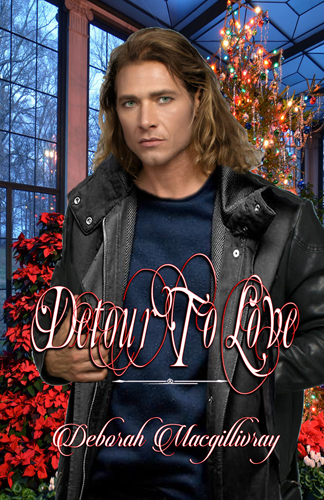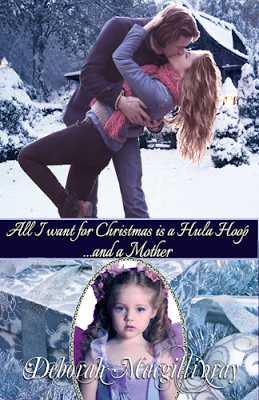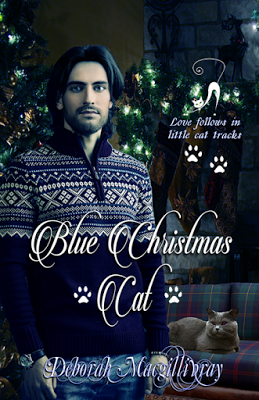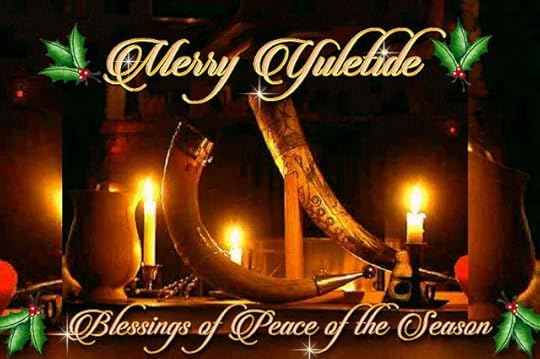Deborah Macgillivray's Blog, page 12
January 20, 2019
Burn's Night
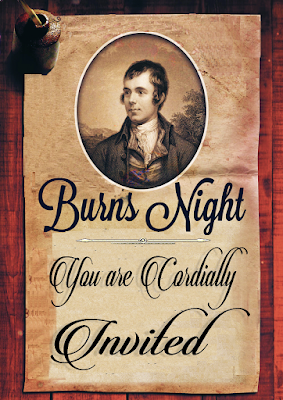
Every January 25th, Scotland and Scots all over the world come together to celebrate the life of the national poet, Robert Burns. There are many Burns Night Celebrations throughout Scotland, and you now see them spreading through the USA. You haven’t been to one? Well, like on St. Paddy’s Day and the wearing of the Green, everyone has a wee bit of Irish in them? You might say the same about Burns Night. So, reach down and find that thread of Scots heritage in your background and get thee to the nearest Burns Night. You won’t regret it.
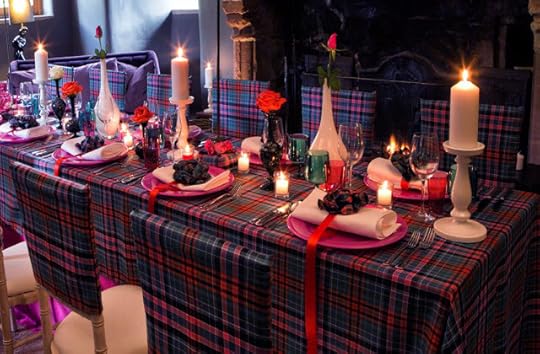
Burns Nights begins with The Piping In The Guests . A piper is positioned to welcome incoming guests, and he plays until the high table is ready to be seated. (If there is no high table set up, then it’s when all the tables are filled and the evening is ready to be called to order.) The evening is called to order by the Captain, Chair or Host, and he warmly welcomes all to the gathering. Next, he outlines what will happen in the evening ahead and in what order.
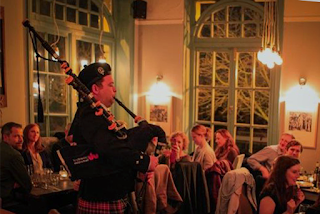
The Piping In The Haggis kicks off the celebration. All guests normally stand as the Haggis is carried in on an ornate silver platter—the piper leads, then comes the Haggis bearer, the chef and the person who will provide the address to the Haggis. A whisky-bearer comes at the end and moves through the gathering to ensure all glasses are filled for the toast. Guests clap in time to the music, until the procession finally reaches the head table. The music ends and everyone is seated again, and is silent in anticipation of the address to a Haggis.
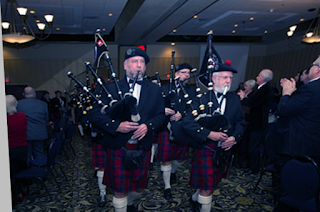
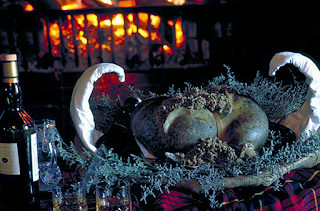
The honored reader holds the crowd’s attention as he offers an entertaining rendition of Burns’ ode to the dish. He will hold his knife or sgian dubh , poised above the Haggis. On cue ( His Knife see Rustic-labour dight) he cuts the casing lengthwise, making sure to allow the meaty dish inside the casing to spill out.
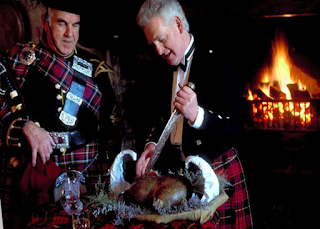
Fair fa' your honest, sonsie face,
Great Chieftain o’ the Puddin-race!
Aboon them a' ye tak your place,
Painch, tripe, or thairm:
Weel are ye wordy of a grace
As lang 's my arm.
The groaning trencher there ye fill,
Your hurdies like a distant hill,
Your pin wad help to mend a mill
In time o’ need,
While thro’ your pores the dews distil
Like amber bead.
His knife see Rustic-labour dight,
An’ cut ye up wi’ ready slight,
Trenching your gushing entrails bright,
Like onie ditch;
And then, O what a glorious sight,
Warm-reekin, rich!
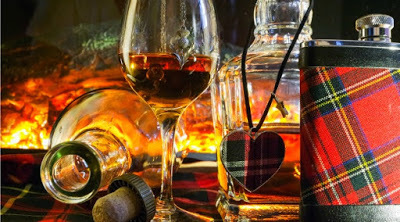
Next comes The Toast to the Haggis . The reader prompts the guests to join in, giving their toasts. Then, it’s time to serve the main course, generally with tatties and neeps (potatoes and turnips). When the meal is served to all, the people partake of the traditional Scottish fare. Background music is played. Wine or ale are served liberally with the dinner. Some add a dash of whisky sauce on the Haggis, which true Scots know means whisky neat! lol
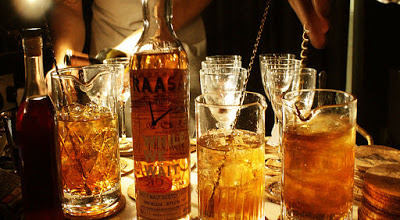
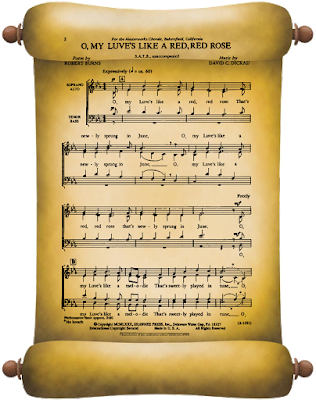
After the meal, it's time for connoisseurs to taste and compare notes on the wonderful selection of malts served by the generous Chair. Each Single Malt has its own distinct taste and smell, and no two are alike. The proper way to drink whisky is to put two fingers into an on the rocks glass, and then add a few drops of water. This releases the bouquet of the malt and increases the flavor. (For those wondering what a dram of whisky is, it’s a bit more than a shot glass.)

Haggis, Neeps and Tatties - Traditional Burns Night Menu
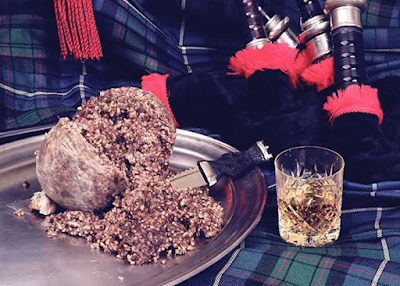
Haggis - Ingredients
1 sheep's stomach cleaned and thoroughly scalded, turned inside out, and
soaked overnight in cold salted water
1 Heart and Lungs of one lamb
1 pound of beef trimmings, fat and lean
2 large onions, finely chopped
8 oz oatmeal
1 tbsp salt
1 tsp ground black pepper
1 tsp ground dried coriander
1 tsp mace
1 tsp nutmeg
water, enough to cook the haggis
stock from lungs and trimmings
Step-by-Step
1. Wash the lungs, heart and liver. Place in large pan of cold water with the meat trimmings and bring to the boil. Cook for about 2 hours. When cooked, strain off the stock and set the stock aside.
2. Mince the lungs, heart and trimmings.
3. Put the minced mixture in a bowl and add the finely chopped onions, oatmeal and seasoning. Mix well and add enough stock to moisten the mixture. It should have a soft crumbly consistency.
4. Spoon the mixture into the sheep's stomach, so it's just over half full. Sew up the stomach with strong thread and prick a couple of times so it doesn't explode while cooking.
5. Put the haggis in a pan of boiling water (enough to cover it). Cook for 3 hours without a lid. Keep adding more water to keep it covered.
6. To serve, cut open the haggis and spoon out the filling.

Tatties and Neeps
1 1/4 lb potatoes (peeled and chopped in cubes)
1 1/4 lb turnips (peeled, chopped in cubes)
1 pinch nutmeg
4 tablespoons milk
4 tablespoons butter
Sea salt and pepper to taste
For the Potatoes: Place the potatoes in a large saucepan, cover with cold water, add a pinch of salt, cover the pan with a lid. Bring the potatoes to the boil, reduce to a simmer and cook until tender (approximately 20 minutes). Drain the potatoes and keep to one side. Add half of the butter and half the milk to the pan the potatoes were cooked in. Melt the butter and warm the milk, add the cooked potatoes and mash. Add the nutmeg and stir well to create a smooth, creamy mash.
For the Turnips: Place the turnips in a large saucepan, cover with cold water, add a pinch of salt, cover the pan with a lid. Bring the turnips to the boil, reduce to a simmer and cook until tender (approximately 20 minutes).
Drain the turnips and keep to one side. Add half of the butter and half the milk to the pan the turnips were cooked in. Melt the butter and warm the milk, add the cooked turnips and mash until smooth and creamy
To Serve: Once cooked remove the haggis from the water.
Place on a serving dish and cut it open with scissors or a knife
and serve with the tatties and neeps alongside. And to drink,
a wee dram of Scotch whisky would be traditional.
As the evening becomes mellow and the meal is done, it is time for The First Entertainment. Generally, this is a singer or musicians who will perform Burns’ songs. If a singer isn't provided, you will get someone reciting poems by Burns.
My Luve is Like a Red Red Rose;
Rantin', Rovin' Robin;
John Anderson, my jo;
Ae Fond Kiss, and Then We Sever.
After the singers or poetry recitation, the keynote speaker takes the stage, and delivers a talk on who Robert Burns was, speaking of his literary genius, his politics, his personal achievements, and disappointments in life. He explains why Burns is so rooted in Scottish nationalism. The speaker‘s bard ability is very important to paint the full picture of who the man was, why his memory is so enduring. The speaker concludes with a heart-felt toast “To the immortal memory of Robert Burns!”

The evening’ s The Second Entertainment is introduced—more songs or poems to round out Burns’ extensive works. Once that is done, you come to The Toast to the Lassies. A more lighthearted part of the evening. The toast is offered to praise women and their roles in the world today, but it should be done with quotations from Burns’ works—and hopefully in a positive tone. This can be a general toast to females, or more specific to those females in attendance.
The Final Entertainment for the evening comprises more songs and poems of Burns, sometimes with dancers. Upon conclusion, it’s time for the women
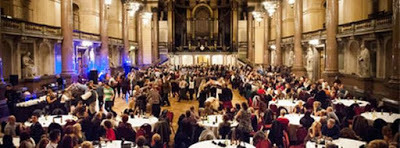
to get a wee dram of revenge in their chance to give The Reply to the Toast to the Lassies, as the females have a turn to address males with Burns’ quotes. Generally, there is a wee bit more bite to the chosen quotes.
As the evening draws to close, the Host thanks everyone for coming and sharing the festivities. He closes the proceeding by inviting guests to stand and sign Auld Lang Syne.
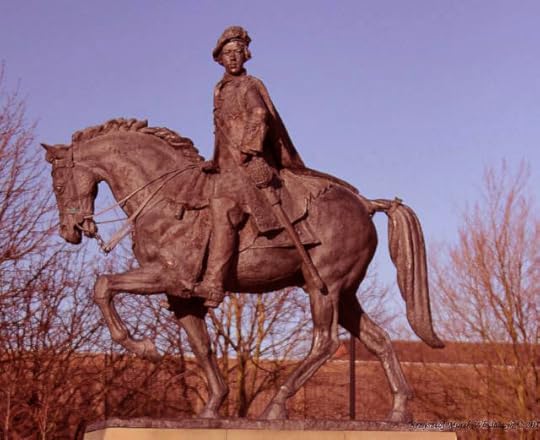
Published on January 20, 2019 16:58
December 30, 2018
Happy Hogmanany 2018
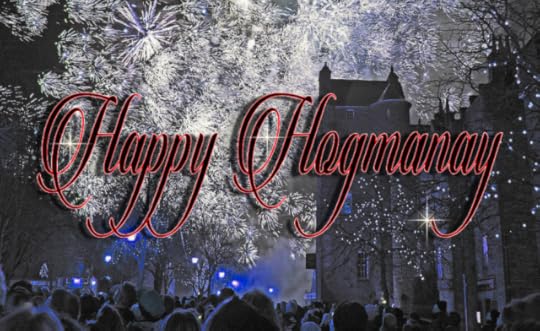
Ever heard of Hogmanay? Well, it is Scotland's New Years celebration. The celebrating runs longer and has many traditions that find their roots in ancient times. They echo back to the Twelve Days of Christmas, where you held Christmas Eve, Christmas and Boxing Day, and celebrated through Twelfth Night.
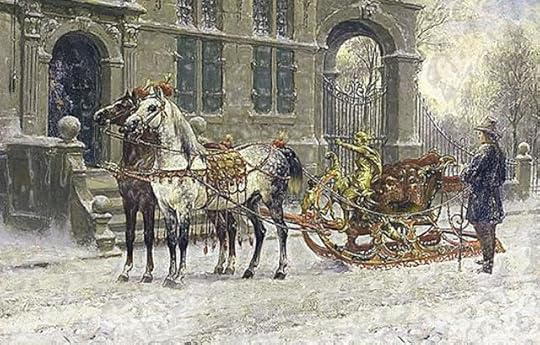
My family kept Christmas Eve and Christmas Day for family only. On Boxing Day, we would get out the sleighs (used to be more snow back then!) and go visiting. We took gifts to neighbors and friends. I thought this day more fun. Riding in the old-fashioned sleighs, and being welcomed into homes for eggnog or warmed cider to shake off the chill, were such wonderful memories. Sadly, the sleighs haven’t been used for years, as we see fewer and fewer White Christmases. Also, the family has scattered and finds it harder to come together like we used to.
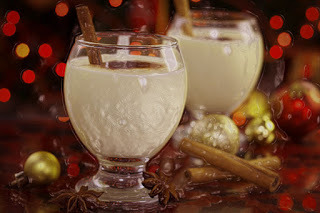
With the end of Christmas, the celebrations in America basically slow. Decorations are taken down and stored for another year. On the other side of the Pond, amazing Hogmanay parties in Scotland are just getting underway, and in some instances lasting over several days.

The Hogmanay name first showed in written records around the early 1600s, but many of the traditions come from a time much older. Some suggest the name stems from be old Norman French of hoguinan (New Years gift). Since the Auld Alliance saw France and Scotland sharing trade and cultures it seems reasonable. A more likely explanation is it could be a variation of Scots Gaelic og maidne (young morning). Still, the Flemish hoog min dag (great love day) might also be the source. Whichever, it shows perhaps several cultures developed the holiday along the same lines, and that it wasn't just confined to Scotland. One has no stronger provable claim to the name than another.
There are many celebrations or simple street festivals, but also you can discover the great, awe-inspiring fire-festivals—of interest to people who love history, but also eye-opening to those unfamiliar with the ancient traditions. These festivals still practice rites and rituals that go back to Pagan times, maybe thousands of years. It’s not hard to find concerts, parties, fireworks and balefires, as well offer a wide range of Scottish fare to satisfy your culinary tastes.
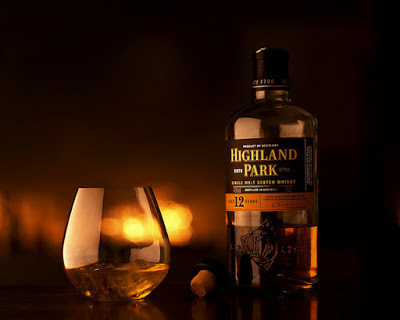
First Footing is one of the customs I always enjoyed. It was considered very unlucky for a redheaded man or women to cross the threshold after the final stroke of midnight. Not wanting to start the year off on the wrong foot, it was hoped a tall, black-haired, handsome man would arrive at the stroke of twelve. This leads to a wee bit of mischief, such as picking a likely lad who fits the bill, handing him a bottle of Single Malt, and sticking him outside, to cross back over at the appointed time. After all, who wouldn't want a tall, handsome, black-haired man to come a calling on the stroke of New Years?
Redding the House is a tradition of a “clean sweep”. It is easy to understand where this one aims—sweeping the house clear of influence of the departing year, and giving you a fresh start. You sweep out the house and clean the fireplaces. Taking out the ashes can see the practice of a scrying skill of Reading the Ashes, foretelling the future much in the manner of reading tea leaves. You are sweeping away all the negative influences that have held sway through the departing year. Once that is done, all brooms and brushes are taken outside and burnt. Keeping old ones invites the negative back in, so you start the year with new hair bushes, mops, small sweeps and brooms. Once that is done, you use lavender, cedar and juniper branches to purify the house, dragging these over windows and doors to protect the house and seal it away from evil spirits. Then, you burn them in the fireplace, the final step to purify the chimney. Thus, you start the New Years all anew.
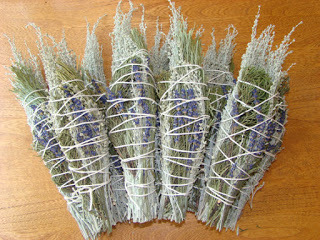
The bonfires and fire-festival are rooted in Pagan Pictish, Celtic or Norse origins. As reflected in the burning of the lavender, cedar and juniper clearing the air of negative influences, these fire-festivals are a purifying of the land. When the fires died and the ashes cooled, they were spread on farmland. In truth, this potash a fertilizer that helps keep the land arable, promoting good root growth and higher crop production. As with many ancient Pagan traditions, there is a rite, but also a logical purpose behind it. A newer celebration, but gaining more and more attention worldwide—is Up Helly Aa in the Shetland Isles. What an amazing festival! There is nothing like it! However, you can still find fire festivals at Stonehaven, Comrie and Biggar, and even Edinburgh has added this element in their Hogmanay celebrations.
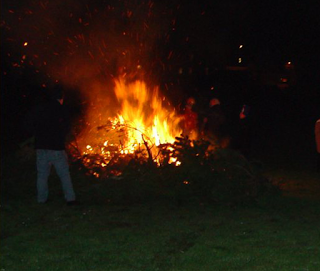
Do you sing Auld Lang Syne at New Years without truly understanding the tradition is Scottish? All over the world every year people sing Robert Burns’ version of the traditional Scottish Air. In Edinburg’s Hogmanay, people join hands for what is reputed to be the world's biggest Auld Lang Syne singing.
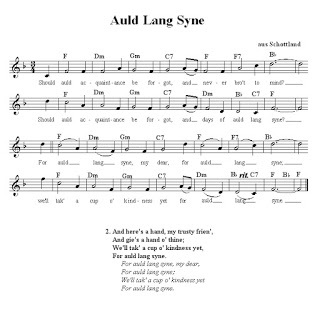
Another odd tradition is the Saining of the House. You find this mostly in rural areas, a tradition that involved blessing the house and livestock with holy water from a local stream. After nearly dying out, you are seeing a revival in recent years. Not surprising since Annis, the goddess of wells and streams is one of the oldest Pagan deities in Scotland. You still see her Clootie Wells dotting the landscape, wells dedicated to her honor (where wishing wells come from). After the house, land and stock are blessed, the females of the house, once more, perform a purifying ritual, of carrying burning juniper branches inside to fill the house with the cleansing smoke. Notice, the commonality with the Redding the House? Once the house was filled with smoke, driving out the evil influences, the windows were opened and whisky would be passed around.
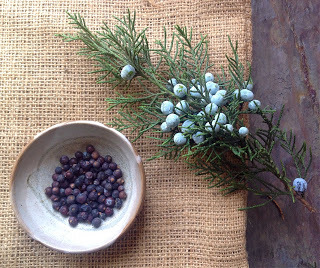
These festivals grew in popularity after the banning of Christmas in the 16th and 17th centuries. Under Oliver Cromwell, Parliament banned Christmas celebrations in 1647. The ban was lifted after Cromwell's downfall in 1660. However, in Scotland, the stricter Scottish Presbyterian Church had been discouraging Christmas celebrations as having no basis in the Bible, from as early as 1583. Thus, even after the Cromwellian ban was lifted elsewhere, Christmas festivities continued to be discouraged in Scotland. In fact, Christmas remained a normal working day in Scotland until 1958 and Boxing Day did not become a National Holiday until much later. Slowly, people began to go back to memories of olden days to find ways to make merry and celebrate. Thus, Hogmanay became a mid-winter celebration to chase away the darkness and welcome the light.

On a personal note, I hope the coming 2019 is bright and full of blessings for us all. My husband was diagnosed with Stage 4 Cancer and he is undergoing Chemo now, and will for the coming month. Him, most of all, I wish a miracle.

Published on December 30, 2018 20:00
December 26, 2018
Happy Boxing Day 2018

Happy Boxing Day!!
In the States Boxing Day is ignored, but I think it was one of the special times of my childhood holidays. Christmas Eve was all magical and giddy with anticipation. It was tinsel and toys, boxes and coloured lights...and the breathless wait for St. Nic. Christmas Day was family time. Everyone would come, bringing more boxes and covered dishes. It was lazing day around television watching Christmas movies. The men would talk politics, horses or show off cars. TM -- lol (Typically Male). The females fluttered around, preparing the meal and chattering. It was good to catch up with your relatives, and meet the newest additions (either babies or newly wedded in-laws).
But Boxing Day was the venture out time. It was a day to go around and gift people who were special to you - friends, neighbors or those who had done services for you throughout the year. You would be welcomed warmly, giving a cup of hot cider, punch or hot chocolate. You got to see their Christmas trees and decorations. I thought this was so much fun. When we were kids, there was often snow. My grandfather had several old fashioned horse sleighs. We'd load them up with the boxes and trek around to friends. It was so much fun. Sadly, we rarely see a white Christmas any more. The poor sleighs are dust covered and leather dry-rotting. Times changes, but sometimes not for better.
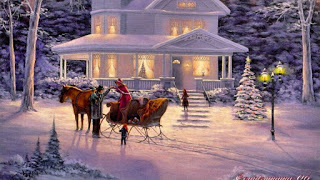
So I am sending you Boxing Day Blessings...though I am sure many in the US think Boxing Day is when you take all the presents back for refunds! lol.
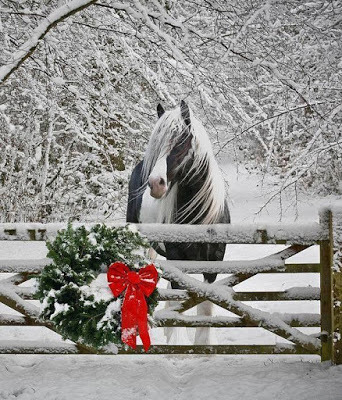
Published on December 26, 2018 12:21
December 24, 2018
December 22, 2018
Wanting a Holiday Romance...or two...or three?
Published on December 22, 2018 23:53
Dragons of Challon Book 3O...
Published on December 22, 2018 23:53
Happy Bowcock's Eve

Well, take Candy out tomorrow to celebrate this wonderfully quaint holidayBowcock's Eve in Cornwall, England
Tom Bawcock's Eve is an annual festival, held on 23 December, in Mousehole, Cornwall, England.The festival is held in celebration and memorial of the efforts of legendary Mousehole resident Tom Bawcock to lift a famine from the village by going out to fish in a severe storm. During this festival Stargazy pie (a mixed fish, egg and potato pie with protruding fish heads) is eaten and depending on the year of celebration a lantern procession takes place.

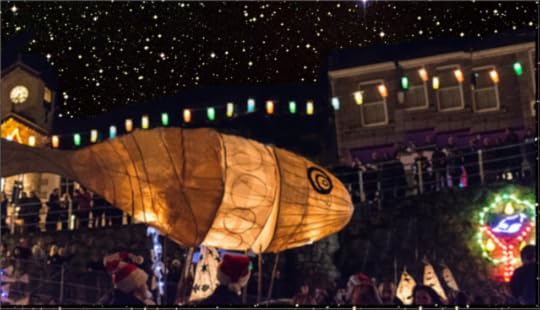
FOR THE CRUST:2 1⁄4 cups flour, plus more for dusting1 tsp. kosher salt1 tsp. mustard powder12 tbsp. unsalted butter6 tbsp. ice-cold water
FOR THE FILLING:6 slices bacon, cut into one inch pieces2 tbsp. unsalted butter1 medium yellow onion, finely chopped1⁄2 cup chicken stock1⁄3 cup crème fraîche2 tbsp. English mustard2 tbsp. finely chopped parsley1 tbsp. fresh lemon juice2 eggs, beatensalt and pepper, to taste|8 fresh sardines, cleaned, heads attached3 eggs, hard-boiled, peeled, and sliced
InstructionsCrust: Whisk flour, mustard, and salt in a bowl. Using blend butter into flour mixture, forming pea-size crumbles. Add water. Work dough until smooth but with visible flecks of butter. Divide dough in half and flatten into disks. Wrap disks in plastic wrap; chill 1 hour before using.Filling: Heat bacon in a 4-qt. saucepan over medium-high heat. Cook until slightly crisp, 5–7 minutes. Transfer bacon to paper towels to drain. Add butter and onion to pan. Cook until golden, 5–7 minutes. Remove from heat; whisk in stock, crème fraîche, mustard, parsley, lemon juice, half the egg, and salt; set aside.
Heat oven to 400°. On a lightly floured surface, roll 1 disk of dough into a 12” round. Fit into a 9” pie plate; trim edges, leaving 1” dough overhanging edge of plate. Arrange sardines in a clocklike pattern with heads resting along edge of crust. Pour filling over sardines; top with reserved bacon, the hard-boiled eggs, salt, and pepper. Roll remaining disk of dough into a 12” round; cut eight 1” slits in dough about 2” from the edge. Place over top of pie and pull sardine heads through slits. Pinch top and bottom edges together and fold under; crimp edges. Brush with remaining egg and cut three 1”-long slits in top of pie; bake until crust is golden and filling is bubbling, 35–40 minutes. Let cool slightly before serving.





Happy Bowcock's Eve!!!


Published on December 22, 2018 21:31
December 20, 2018
Goodbye to my friend, Boots
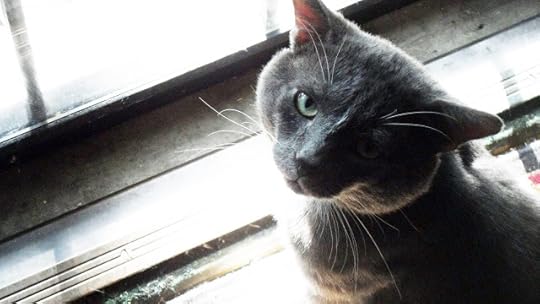
Today I had to let go of something very precious - Boots. Boots was diagnosis with kitty version of HIV, so I knew he would likely die soon. He wasn't a young cat to start. I had to have him put to sleep because he was in such agony. His cries were daggers to my heart.
Losing Bootsie hurts because he came to me as older cat. Thrown away, unloved, he hung around the church. There is a baseball field there and he learned to be for food. He also learned to jump in the stone trash cans -- there he found food, and he would burrow under the paper trash to stay warm. He learned to get water from the girls bathroom, The church school tossed out dried bread to the birds, which he stole to stay alive. He found me because I left food out for the strays. He would sneak up on the porch and eat a little bit. His stomach was so shrunken that he couldn't eat very much. Once day I tried to approach him, to encourage him to yet more. He was all skin and bones. It was bitter cold winter. He wouldn't let me get too near, but he would come and eat, and then eat a little more. I was scared he wouldn't make it through the harsh winter. When I learned it was going down to -20, I took the risk and snatched him up.
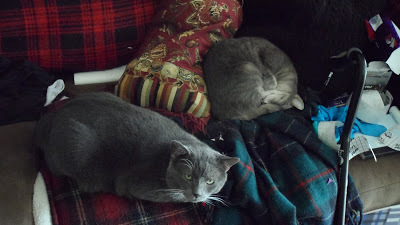
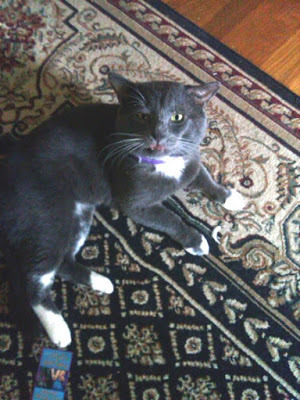
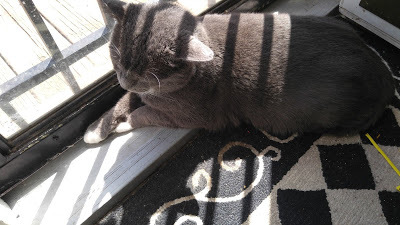
He stayed with me, recovered, and I found he loved to walk on a leash. Until one man at the church deliberately stomped his feet at him to scare him away. He was gone from Thanksgiving. Candy and I walked and called the church grounds and baseball fields trying to get him to come back. By Christmas I had just about given up, thinking he wouldn't come back. I used to sleep on the couch, with the front door open, so I would be there if he came back. On New Years Eve, I just about gave up. Then, I looked up and he was there. I cried out his name and he looked at me with his big sad eyes like, you don't want me anymore. He turned and ran. He was about halfway down the drive when I caught up with him. He finally stopped and I grabbed him and brought him in.
He stayed in from that day. I never took him walking for fear he would run away again. He got FAT. He must have been 25 pounds when he got sick with kitty version of HIV. They said he could live a few more years with care. Boots would purr and purr when you brushed him. He and Loki were like litte mates.
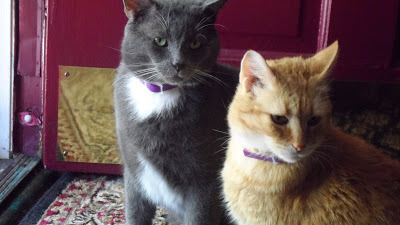
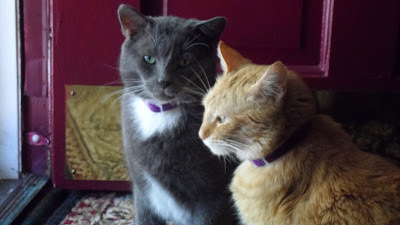
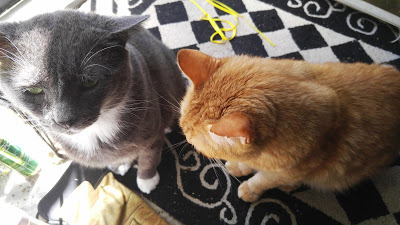
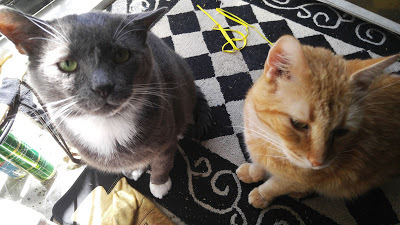
Loki walks the floor tonight, and keeps looking at me with an expression that says, "Where is our Bootsie."
He was just a piece of garbage to the person who threw him away, left him to freeze and starve. To me, he was a special magical being that I was lucky he came to share my life.
Published on December 20, 2018 22:46
Happy Yuletide...welcome the light
Published on December 20, 2018 20:06


